Energy Storage
Craig Tropea
Solar
Jonathan Lwowski
Solar
Steve Macshane, CESSWI
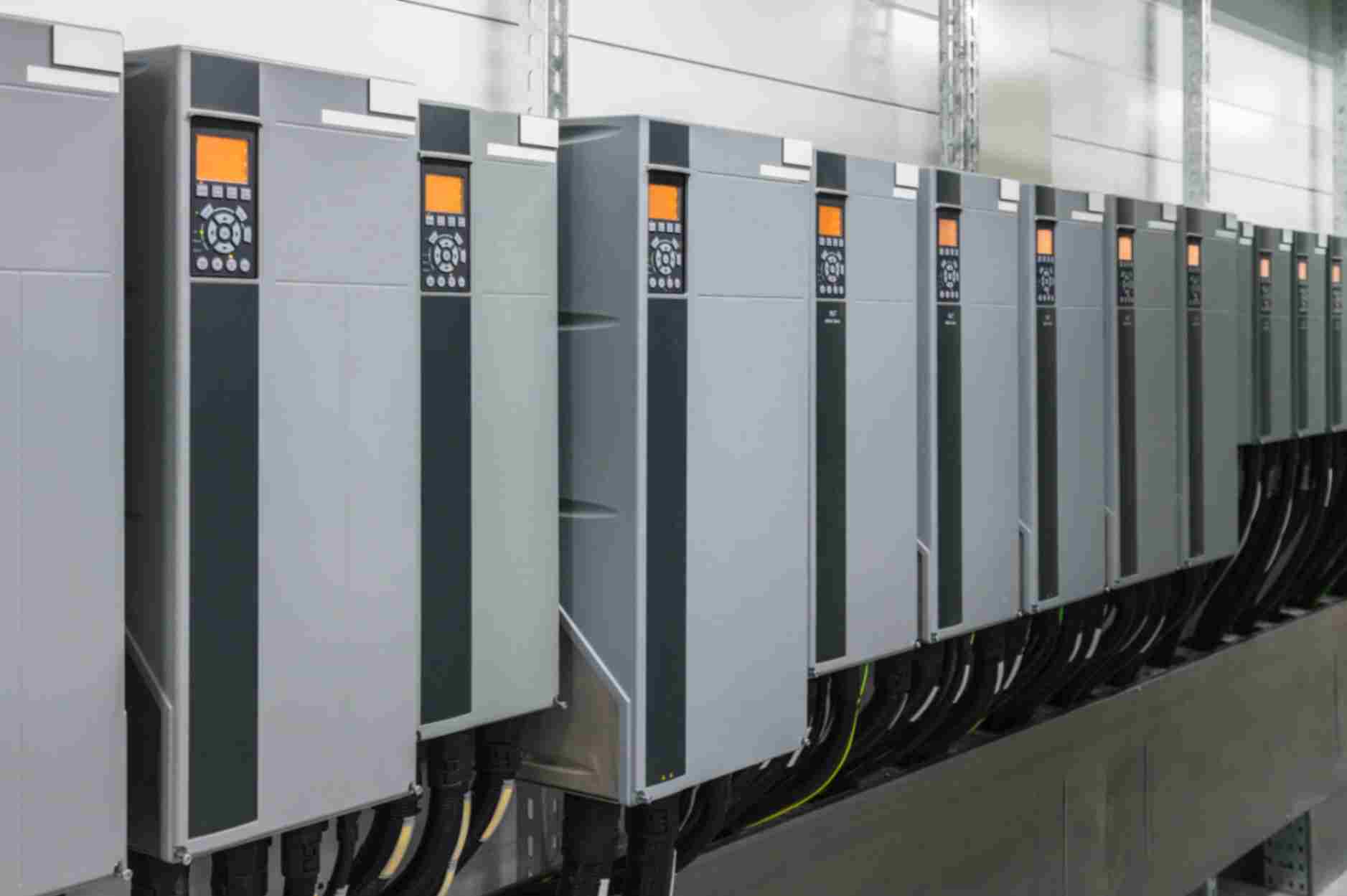
Avonlea Lithium, a subsidiary of Avonlea Environmental Technologies, announces the resounding success of its Advanced Chemical Cavitation Extraction of Lithium (ACCELi) Cavitek pilot plant in Northeast, Pennsylvania. After one month of continuous operation, the innovative mineral extraction system has exceeded performance expectations, marking a transformative milestone for domestic lithium and critical mineral production in the United States.
Unprecedented Results from Cutting-Edge Technology
Located at Kendra II’s Springville WMG 123 Facility, the ACCELi Cavitek pilot plant processed thousands of litres of wastewater brine daily from the Marcellus Shale Formation’s natural gas operations. Utilizing proprietary hydrodynamic cavitation technology, the system efficiently extracts lithium, strontium, magnesium, calcium, and barium from brine that would otherwise be discarded. Initial data indicates recovery rates and product purity appear excellent, with detailed results to be published following independent verification by Montrose Environmental Solutions.
A National Strategic Opportunity
The Marcellus Shale Formation holds lithium-rich brine capable of meeting up to 40% of current U.S. lithium demand. Avonlea’s ACCELi technology positions Pennsylvania as a cornerstone of America’s clean energy transition, offering a scalable solution to reduce reliance on foreign mineral imports.
“This pilot demonstrates the ACCELi system’s ability to deliver commercially viable, environmentally responsible mineral extraction,” said Douglas Brett, President of Avonlea Environmental Technologies. “The results not only validate our technology but also underscore the potential for Pennsylvania to lead in critical mineral innovation.”
Ken Scavone of Kendra II added, “This process is a cheaper and greener way to handle getting rid of produced water,” highlighting the dual environmental and economic benefits of the ACCELi approach.
Next Steps
Avonlea and Kendra II have agreed in principle to enter into an arrangement to work together to develop this opportunity across Pennsylvania and to evaluate other opportunities in Texas. Avonlea plans to build out the ACCELi lithium modular commercial-scale processing equipment in Pennsylvania centralizing US operations there.
Avonlea Environmental Technologies | https://avonlea.tech/
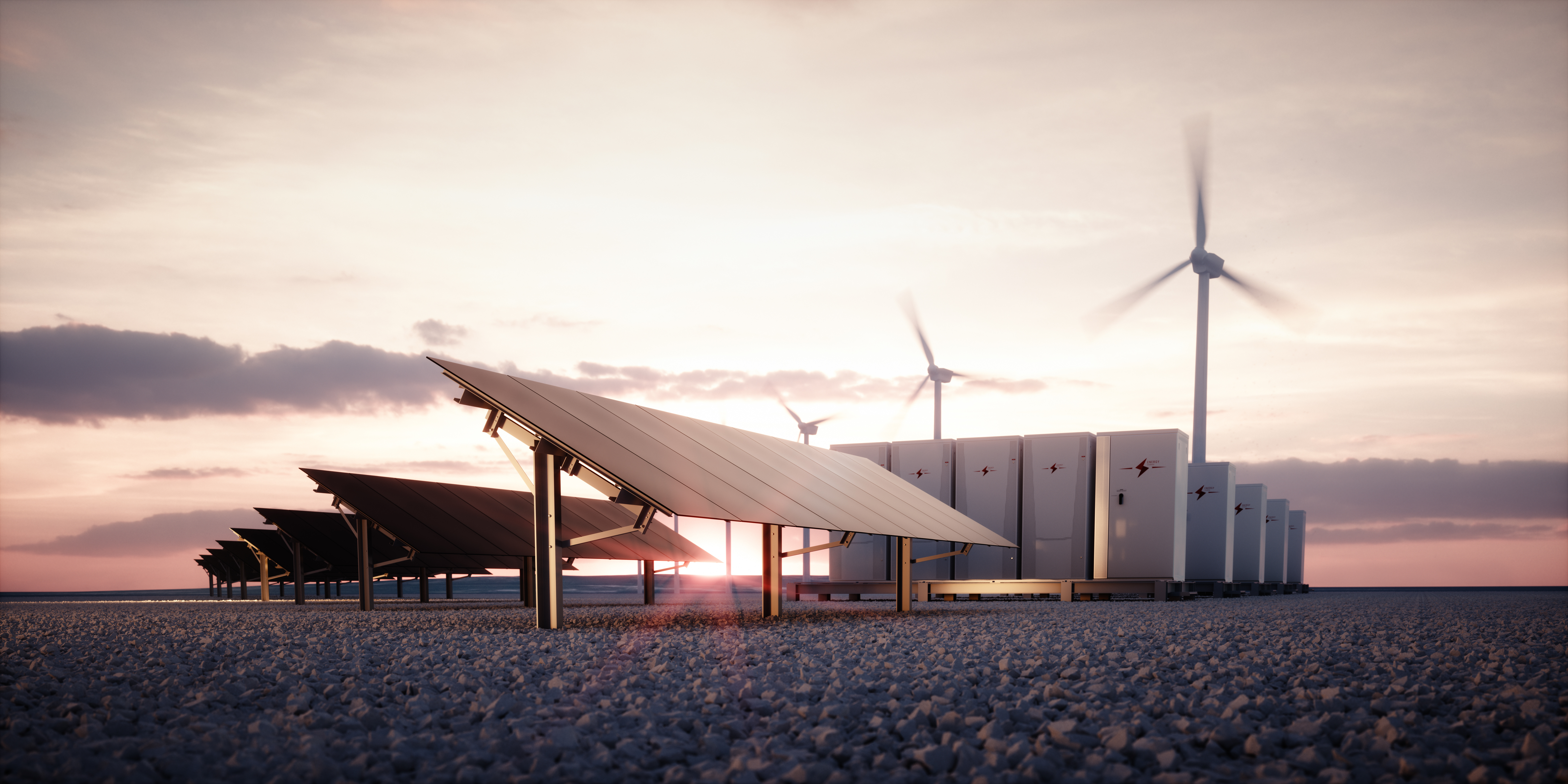
Li-Cycle Holdings Corp. (OTCQX: LICYF) (“Li-Cycle” or the “Company”), a leading global lithium-ion battery resource recovery company, announced that the Company and its subsidiaries in North America (collectively, the “Li-Cycle Group”) have sought and obtained from the Ontario Superior Court of Justice (the “Court”) an order (the "Initial Order") providing them with creditor protection pursuant to Canada’s Companies' Creditors Arrangement Act (the "CCAA"). As part of the Initial Order, the Court ordered, among other things, a stay of proceedings in favor of the Li-Cycle Group for an initial period to and including May 22, 2025 (the "Stay Period") and the appointment of Alvarez & Marsal Canada Inc. as monitor of the Li-Cycle Group during the CCAA proceedings (in such capacity, the "Monitor") to assist the Company with its restructuring efforts and to report to the Court.
The Company’s U.S. subsidiaries (including Li-Cycle Inc., which owns the Company’s Spokes in Arizona, Alabama and New York, and Li-Cycle North America Hub, Inc., which owns the Company’s Rochester Hub project) have commenced proceedings before the United States Bankruptcy Court for the Southern District of New York (the “U.S. Bankruptcy Court”) under Chapter 15 of the U.S. Bankruptcy Code (“Chapter 15 Proceedings”) for recognition of the CCAA proceedings as a “foreign main proceeding.” The U.S. Bankruptcy Court has imposed a broad stay, for the benefit of the Company’s U.S. subsidiaries, barring the commencement of legal action, the enforcement of remedies, any act to obtain possession of their property in the United States or to exercise control over such property, and other similar conduct.
As part of the CCAA proceedings, the Li-Cycle Group expects to conduct a court-supervised sale and investment solicitation process (the “SISP”), which will be a continuation of its previously disclosed efforts to seek buyers for its business or its assets.
The Li-Cycle Group has entered into a term sheet with an affiliate of Glencore Canada Corporation (“Glencore”), the Company's largest secured creditor, for a DIP Facility. The DIP Facility consists of a credit facility of up to a maximum principal amount of $10.5 million which is expected to be used to finance Li-Cycle’s working capital requirements, including for the continued operation of its Germany Spoke, and to implement the restructuring contemplated in the CCAA proceedings, such as the pursuit of the SISP. The DIP Facility remains subject to approval by the CCAA Court.
Additionally, the Li-Cycle Group has entered into an equity and asset “stalking horse” purchase agreement (the “Stalking Horse Agreement”) with Glencore. Glencore has agreed to a “stalking horse” credit bid for at least $40 million for certain of Li-Cycle’s subsidiaries and assets, including its Arizona Spoke, Alabama Spoke, New York Spoke, Germany Spoke, Rochester Hub project, and its intellectual property, as well as assumption of certain of its liabilities. The Stalking Horse Agreement remains subject to approval by the CCAA Court.
The Company’s Germany Spoke is expected to have sufficient working capital (including through the DIP Facility) to continue operating during the CCAA proceedings. Li-Cycle is undertaking efforts to wind down certain of its European subsidiaries, with the exception of its operating businesses in Switzerland and Germany. The Company will also be winding down its subsidiaries in Asia.
As a result of the CCAA Proceedings, an event of default has occurred under Li-Cycle’s loan agreement with the U.S. Department of Energy (“DOE”). Li-Cycle has not drawn down any funds under the DOE loan facility, as the Company has not satisfied the conditions precedent for the first advance.
The CCAA Proceedings have also caused an event of default under the Company’s convertible notes, which are held by Glencore and Wood River Capital, LLC (“Wood River Capital”). Wood River Capital now would have, in the absence of the stay of proceedings, the right to require the redemption of its convertible notes. The event of default under the Company’s convertible notes held by Glencore has resulted in an automatic acceleration such that the principal, interest and any make-whole premium due thereunder have become immediately due and payable.
As previously disclosed, the Company has been actively reducing its cost structure and seeking financing and strategic alternatives to fund its business. However, following a thorough review and after careful consideration of all available alternatives and in consultation with legal and financial advisors, the Company’s Board of Directors, following receipt of the recommendation of the Company’s Special Committee of independent directors, determined that it was in the best interests of the Company to commence the CCAA proceedings, with a view to pursuing the SISP and implementing one or more transactions with respect to its business and assets.
The Company’s Board of Directors and management will remain responsible for the day-to-day operations of the Company under the general oversight of the Monitor during the CCAA proceedings.
The Initial Order provides the Company with, among other things, relief from certain reporting obligations under securities legislation. As a result of the commencement of Chapter 15 Proceedings, the Company will no longer qualify to trade on the OTCQX Best Market and will be moved to the OTC Pink Markets effective May 15, 2025.
At the “comeback” hearing before the CCAA Court on May 22, 2025, the Li-Cycle Group intends to seek, among other things, approval of the DIP Facility, the SISP and the Stalking Horse Agreement as a “stalking horse” credit bid in the SISP and an extension of the Stay Period until a subsequent date to be determined.
Additional information regarding the CCAA proceedings is available on the Monitor’s website at https://www.alvarezandmarsal.com/LiCycle, or by calling Alvarez & Marsal at 1-844-864-9548, or by emailing at [email protected]. Documents relating to the restructuring process such as the Initial Order, the Monitor's reports to the Court, as well as other Court orders and documents shall also be published and made available on the Monitor's website.
Li-Cycle | https://li-cycle.com/
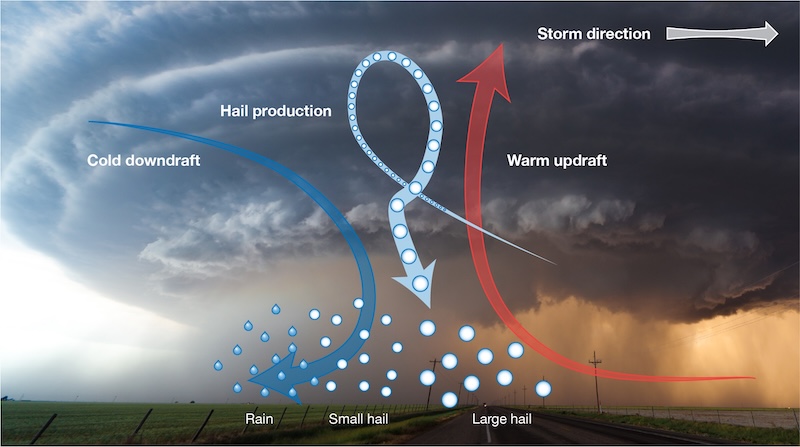
The National Oceanic and Atmospheric Administration (NOAA) estimates that in 2024 alone, the United States experienced 27 weather- and climate-related billion-dollar disaster events, with losses totaling $182.7 billion. Severe convective storms — a category that includes hazards such as high wind, extreme hail, and tornadoes — were responsible for 17 of those 27 events, resulting in an estimated $46.8 billion in combined damages.
Given the increasing frequency and severity of damaging convective storm events, it is important for clean energy project stakeholders to understand not only how hail forms but also how climate scientists predict hailstorms to change in the coming decades.
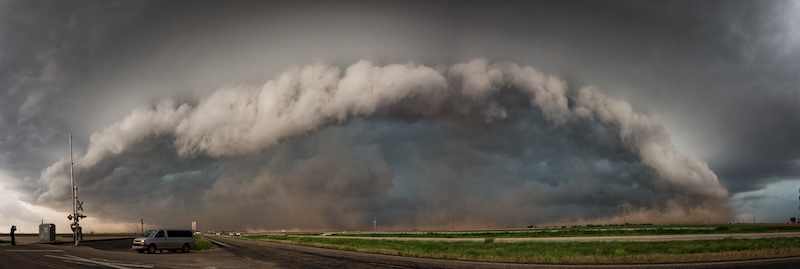
© Robert / stock.adobe.com
Hailstone formation and growth
The World Meteorological Organization defines a hailstone as any particle of ice larger than 5 mm in diameter generated within a convective thunderstorm. Generally, hail-producing convective storms develop when some mechanism — perhaps a large-scale meteorological phenomenon such as a weather front or even a physical geographic feature like a mountain range — forces large volumes of air to move vertically upward into an unstable layer of the atmosphere.
In the meteorological context, unstable refers to a state where the relative temperature of a pocket of air (typically referred to as an air parcel) is warmer and thus less dense than its surroundings. This concept of atmospheric instability is fundamental to severe thunderstorm generation, as it helps drive the hail generation process by supplying the necessary moisture content to the upper levels of the troposphere.
When these unstable conditions occur, the warm air parcel ascends on its own without the need for additional forcing from large-scale features. Conceptually, the air pocket behaves much like a hot-air balloon, which will rise freely after a propane burner heats the interior air and increases its buoyancy.

As parcels of warm air ascend, water vapor cools and condenses into the small water droplets that contribute to cloud formation. Even after the parcel reaches a subfreezing layer characterized by temperatures in the 0°C to -20°C range, some water droplets exist in supercooled liquid form, a key ingredient for hailstone creation and growth.
As this supercooled liquid water chaotically collides with ice-nucleating particles — which are small particles of sand, dust, or ice suspended in the atmosphere — it freezes, and the hailstones grow larger. This growth process can take various forms, significantly impacting the eventual density and physical characteristics of the resulting hailstones.
Dry growth occurs when temperatures are well below freezing and any remaining supercooled water droplets freeze immediately upon contact with a growing hail embryo, which traps tiny bubbles of air within the stone, leading to cloudy-looking, lower-density hail. Alternatively, wet growth occurs when temperatures are just below freezing, and water droplets that collide with a hail embryo first spread over its surface and freeze slowly, allowing air bubbles to escape, which creates a very transparent and dense layer of ice around the hailstone.
These growth processes are directly linked to hail density, meaning they are critical for understanding the ballistic-impact damage potential associated with falling hailstones.
Modeling hail in a future climate
Meteorologists have extensively investigated how the size of hail and the frequency of hail events are influenced by potential changes in the key factors that contribute to hail formation and growth during severe thunderstorms. These factors include variations in total moisture content and the microscale properties of cloud physics.
Given that every 1°C of anthropogenic warming is expected to coincide with a 7 percent increase in atmospheric water vapor content, convective instability is projected to increase over much of the United States by the end of the century. Moreover, higher moisture content would also add to the supercooled water available to a storm in the primary hail growth region, potentially leading to larger, denser hailstones.
It is likely that these effects will be counteracted, at least slightly, by deeper layers of warm air near the Earth’s surface, increasing the degree to which hail melts as it falls to the ground. However, larger hailstones have a greater mass and fall at a faster rate than smaller ones. Therefore, larger hailstones would be less impacted by this potential increase in melting.
An increase in moisture content not only provides potential for greater availability of supercooled water but also allows for greater energy release through the condensation process. More energy release would further the positive feedback loop that is atmospheric instability and add to the potential for more frequent and stronger severe thunderstorms.
Transitioning from understanding how these atmospheric ingredients may change in a future climate into actual predictions of hail frequency and severity presents a problem: If we only model the important hail creation variables, we are only predicting environments favorable for hailstorms and not hail occurrence directly.
To get around this issue, some climate scientists have begun predicting the future landscape of severe weather using a tactic known as dynamical downscaling, which utilizes the output from a global climate model as the input to short-term regional weather models that predict our weather patterns on a day-to-day basis. In this way, climate modelers can allow storms to initiate based on a set of predicted starting conditions, rather than relying solely on an ingredients-based modeling approach.
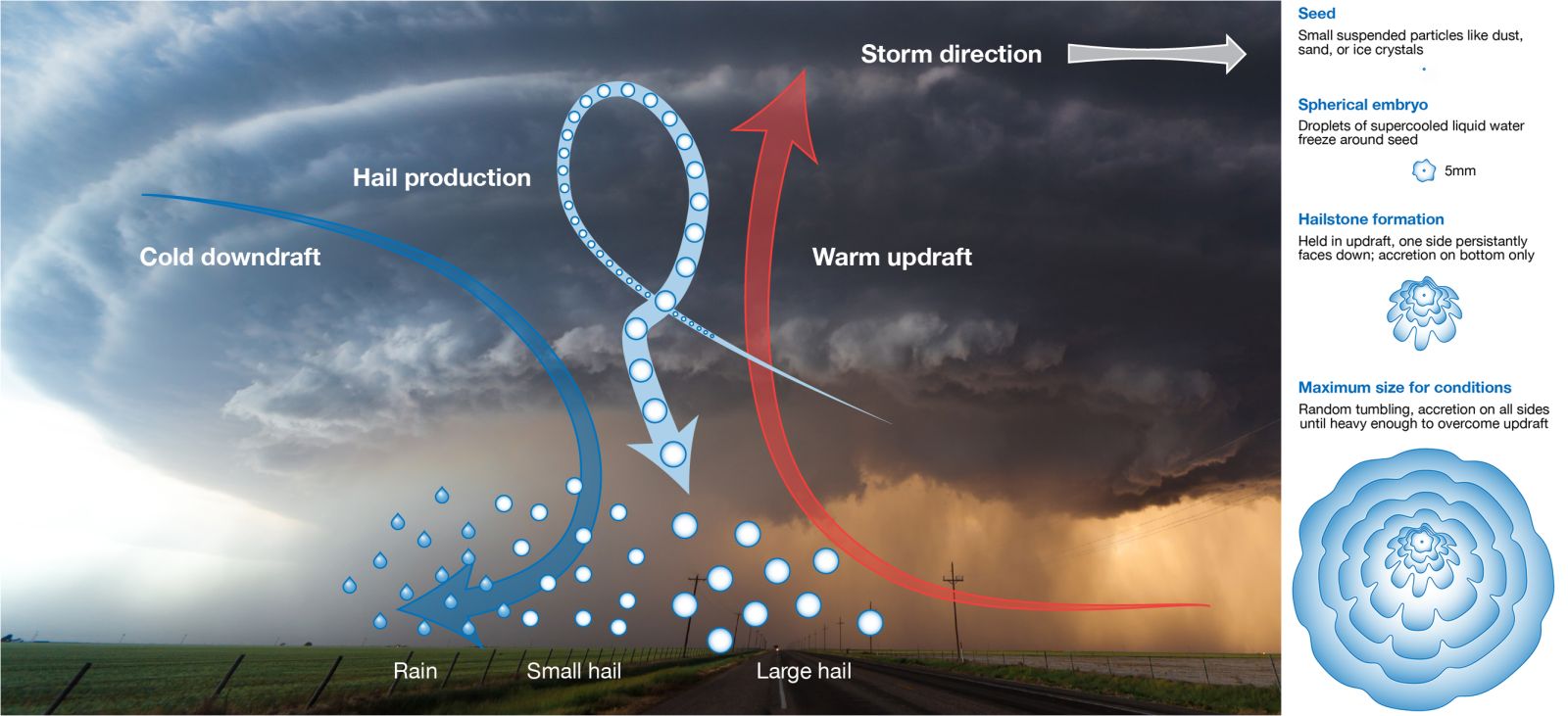
Such studies predict that by the end of the century, the number of >20 mm summertime hail days in the western United States may increase by up to 6 days per month but decrease by 3 to 5 days per month east of the Rockies, where hail risk is generally greatest. Increases in days with significantly severe hail events (>50 mm) are expected to increase over the same time scale, potentially by 2 days per month in the Central Plains states.
Changes to severe convective storm meteorology are not an insurmountable barrier to clean energy project development activities. By continuing to innovate, industry stakeholders can develop creative solutions that mitigate severe weather risk. Moreover, by better understanding the complex meteorological systems that generate these events, we can pave the path to a more resilient future where we are better prepared to deal with severe convective storms and extreme hail events.
Denis Weaver is the staff meteorologist for VDE Americas, a technical advisory firm that has supported the financing of over $15 billion in clean energy assets and is a leading expert in hail risk intelligence and loss prevention.
VDE Americas | www.vde-americas.com
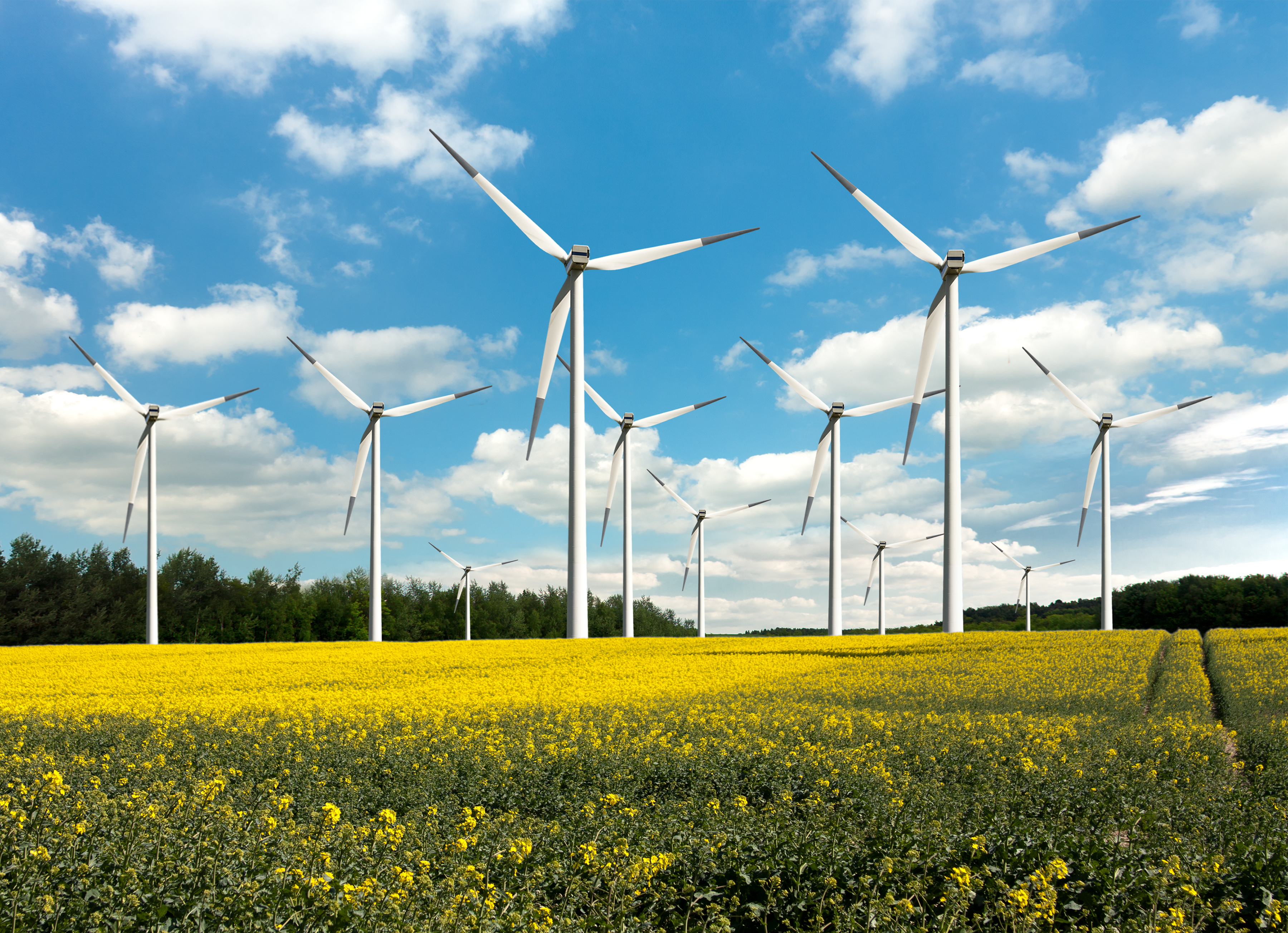
Offshore wind developer US Wind has entered memoranda of understanding with Maryland Department of Natural Resources (DNR) and Delaware Department of Natural Resources and Environmental Control (DNREC) in which the company has proposed $20 million in support to local fishermen.
According to a press release, the agreements with the states were developed in response to watermen feedback as US Wind continues to pursue a project off Sussex and Worcester Counties. The Trump Administration’s reversal of a Biden-era push for offshore wind has left the future of the project uncertain.
$13.5 million of the $20 million proposal would go to the following in Maryland:
-Grants for fishing businesses in the harbor to continue the offloading of catch and ice services;
-30 years of funding for West Ocean City Harbor maintenance, such as dredging requested each year by the community, dock and shore stabilization
-Substantial money for gear development, marketing of local seafood, fishing business development, and incentives for new commercial fishermen.
In addition to the separate Resilience Funds, $5.4 million of the proposed payments would be distributed as claims-based compensation for commercial and for-hire recreational fishermen who can demonstrate US Wind’s projects impacts their revenue, according to the company. The proposal also includes over $1 million is upgraded navigation and safety equipment for local vessels operating near the windfarms.
US Wind is still pursuing a facility in the West Ocean City Harbor to serve as their main location to plan and coordinate offshore wind turbine maintenance and service. Under the new MOU with Maryland, it will only use one of the two properties they have optioned in West Ocean City.
US Wind | https://uswindinc.com/
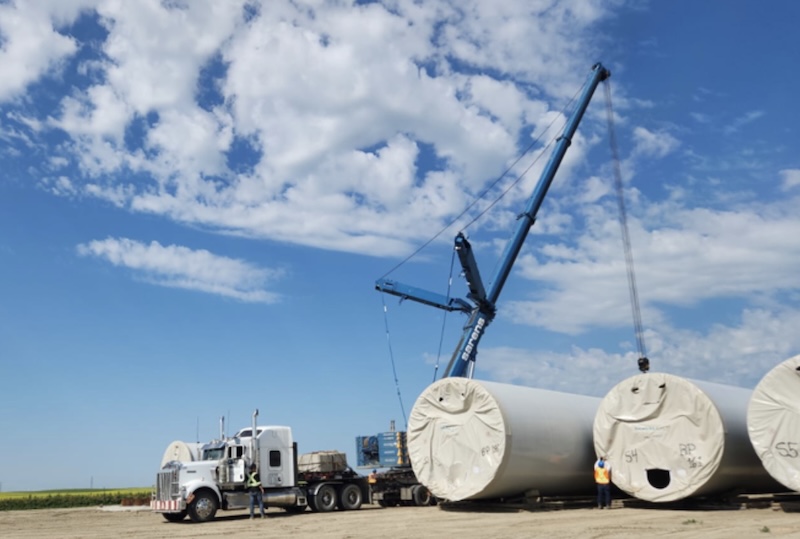
Sarens is proud to play a key role in the Buffalo Plains Wind Farm project, located near Lomond, Alberta. This significant development, covering 17.500 acres of farmland, involves the installation of 83 new wind turbines, contributing to Canada’s clean energy future. Once operational, the Buffalo Plains Wind Farm will generate 494 megawatts (MW) of clean energy, enough to power over 100.000 homes. By doing so, the project is expected to help reduce CO2 emissions by approximately 795,000 tons per year.
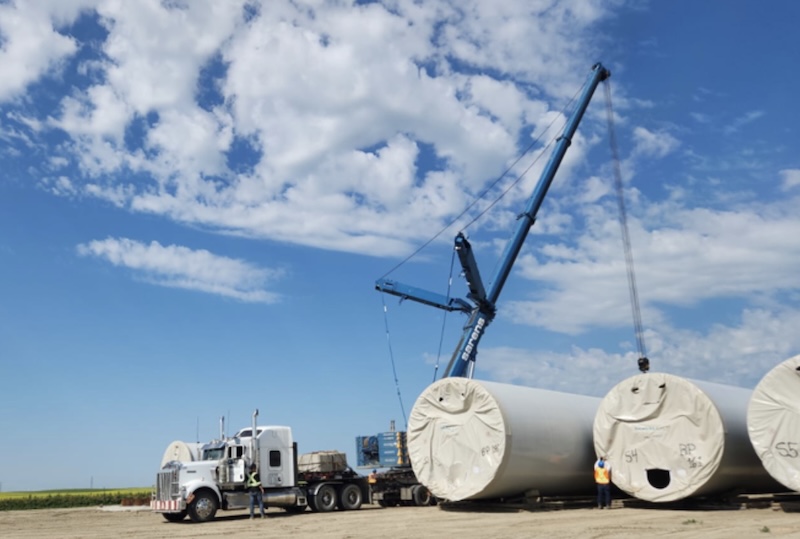
This project marks another step towards Canada’s goal of transitioning to low-carbon energy and enhancing energy stability. As the country continues to invest in renewable energy, the Buffalo Plains Wind Farm will play a crucial role in increasing Canada’s clean energy capacity.
Sarens, the global leader and reference in crane rental, heavy lifting and engineered transport, was commissioned by Borea Construction to offload and install the 83 Siemens wind turbines. The turbines, models Siemens Gamesa 6.0-170 and 5.0-145, each have a nominal capacity of 6,6MW and 5,2MW, respectively. The 6.0-170 model features a hub height of 110,5 metres and a weight of 149,4 tons, while the 5.0-145 model stands at 95,5 metres with a weight of 152.4 tons.
Sarens’ engineering team successfully offloaded and installed 38 turbines of the 145 model and 45 of the 170 model. To accomplish this, we employed a team of 52 workers and utilised a range of specialised equipment, including a boom booster, LG-1750, and two CC-3800 cranes. These cranes were selected for their capability to handle heavy loads at great heights and their ease of relocation, which proved essential for the project’s efficiency.
One of the project’s main challenges was selecting the appropriate cranes to handle the complex lifts while ensuring efficient relocation. The use of the LG-1750, known for its strong lifting capacity at heights, was particularly beneficial in meeting the project’s demands. Additionally, Sarens had to navigate the sandy soil conditions, which required dismantling the cranes more frequently than usual for transportation. High winds, common in the area, also posed a challenge, but the team capitalised on low wind periods to optimise performance and meet project deadlines.
The Buffalo Plains Wind Farm project brings multiple benefits to the Vulcan County area. During construction, it is expected to create up to 300 jobs, with an additional 10 to 15 permanent positions for the local community once the facility is operational. Local businesses have also benefited from the project through supply chain opportunities, including excavation, civil works, road maintenance, and more. Additionally, the project has increased spending on goods and services in the neighbouring areas, further boosting the local economy.
Sarens has a long-standing history of supporting wind energy projects across Canada. Previous projects include the Golden South Wind Project in Assiniboia and the Blue Hill Project in Saskatchewan, where Sarens successfully transported and erected 50 wind turbines. Additionally, Sarens has provided maintenance support at the Whitla Wind facility, the largest wind farm in Alberta, ensuring the ongoing functionality of turbines by handling blade, rotor, gearbox, and main shaft assembly and disassembly.
Sarens | https://www.sarens.com/

RWE, the third largest renewable energy company in the U.S., has expanded its growing operational asset base by completing six projects in recent months with a combined capacity of 999 megawatts (MW). The projects include one new wind farm, one repowered wind farm, three new solar installations and one standalone battery energy storage system (BESS) across four states. The newly completed projects strengthen U.S. energy infrastructure and independence, and will be capable of producing enough electricity to power the equivalent of more than 177,000 homes and businesses nationwide.
Andrew Flanagan, CEO, RWE Clean Energy: "RWE is meeting growing demand by providing homegrown energy and advancing U.S. energy leadership with six completed clean energy assets. These projects advance domestic energy security nationwide, while stimulating local economic growth and creating energy sector jobs. As we move forward, we'll continue to help meet the rising energy demand across the U.S."
The newly operating assets include an expansion of the Westside Canal Complex, adding a 119 MW (476 MWh) 4-hour battery energy storage project located in Imperial County, California. As the second phase of the Westside Canal Complex, which provided 160 construction jobs, it increases the total capacity to 250 MW (1,000 MWh). This addition strengthens California's energy resilience, supporting reliability and the grid. It will also support local economic growth contributing an estimated $20 million in property tax revenue over the project's 20-year lifetime.
RWE completed three projects in Texas, including a 300 MW solar project in Goliad, Texas called Peregrine Solar. The project team's efficient work enabled the project to safely commission 300 MW in 15 days. This project provided critical economic benefits and local employment of 250 workers during its construction phase. Additionally, RWE's project will provide a community benefit that will generate over $180,000 per year for local jurisdictions throughout the project's lifetime.
Peyton Creek II, a 243 MW wind project in Bay City, Texas, was recently commissioned, bringing the total generating capacity of the Peyton Creek Complex to 394 MW. Peyton Creek II created approximately 250 jobs during construction, with the full Peyton Creek Complex now supporting 20 full-time local jobs in operation and adding approximately $60 million to the local tax revenue in Matagorda County over the project's lifetime.
Also in Texas, RWE has completed commissioning of the repowered Champion Wind project, a 127 MW wind farm in Nolan and Mitchellcounties, Texas. Originally commissioned in 2008, RWE extended the project lifetime for an additional 20 years, ensuring continued support for the local community and generating approximately $31 million in tax revenue over the project's lifetime. During construction, the project provided more than 200 local jobs.
Marking RWE's first operational project in Arkansas, Quartz Solar, is a 135 MW solar project in Cross County, bringing new economic opportunities and added workforce in the state during a time of exponential power demand as data centers and manufacturing surge. The project supported 300 jobs at peak construction and will support additional permanent jobs during operation. Notably, Quartz Solar will provide $12.5 million in property tax revenue during its operating lifetime.
In Virginia, RWE's 75 MW Wythe County Solar is now operational and is contributing to the region's power supply. The project employed more than 300 workers during peak construction and sourced locally for services during construction such as water, dumpsters, sanitary services, rental equipment and more. It will also add around $7 million in property tax revenue over the lifetime of the project. This project aligns with Virginia's "all of the above" energy strategy and helps meet growing energy demands.
Generating Impact in the U.S.
The commissioning of nearly 1 gigawatt of clean energy assets is providing American-made energy to the local grid and provides thousands of jobs, many of which are locally sourced. From coast to coast, these projects provide reliable and affordable power capacity.
RWE | americas.rwe.com
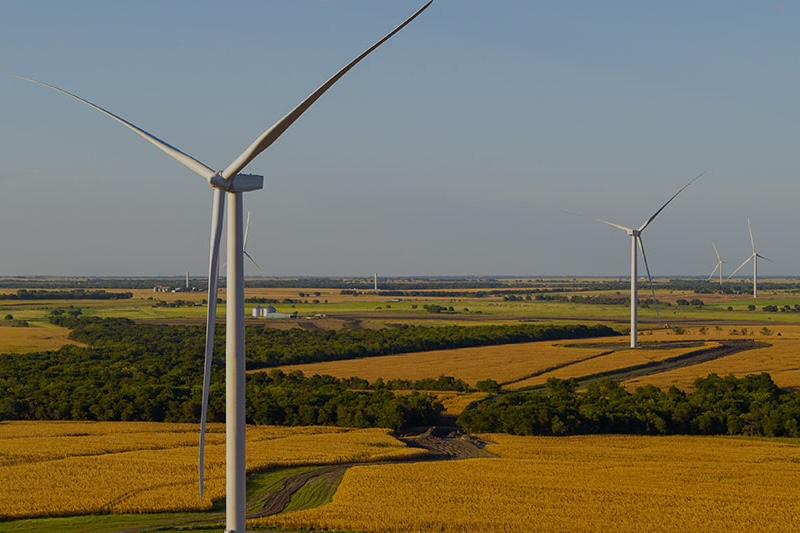
ENGIE North America (ENGIE) announced it has entered into a preliminary agreement with Cipher Mining Inc. (NASDAQ:CIFR) ("Cipher") to enter into a power supply agreement to power a Cipher data center in Texas. Once executed, the agreement would allow Cipher to purchase up to 300 megawatts (MW) of clean energy from one of ENGIE's wind facilities.
The new arrangement would leverage the wind project's renewable energy generation to power the co-located data center, helping to alleviate an already congested transmission area. This helps offset basis risk and mitigate curtailment challenges especially in regions like West Texas, where wind and solar resources are abundant but often face constraints due to transmission bottlenecks and curtailment.
By pairing the data center with renewable energy, this strategic collaboration supports the use of surplus energy during periods of excess generation, while enhancing grid stability and reliability.
"ENGIE is committed to pursuing innovative solutions that maximize the value of renewable generation and improving cost effectiveness of delivering clean energy supply to our customers," said David Carroll, Chief Renewables Officer & SVP, ENGIE North America. "We are focused on meeting the growing need for power by our customers as they expand their operations in the U.S. and renewables is an essential part of supplying this increasing demand."
This agreement continues to reflect ENGIE's position as one of the leading providers of power purchase agreements globally.
ENGIE North America I www.engie-na.com
Energy Storage May 15, 2025
Natural disasters including hurricanes, severe storms, winter storms, wildfires and heat waves are becoming more frequent and severe, causing widespread power outages across the United States. Between 2000 and 2023, 80 percent of U.S. power outages w....

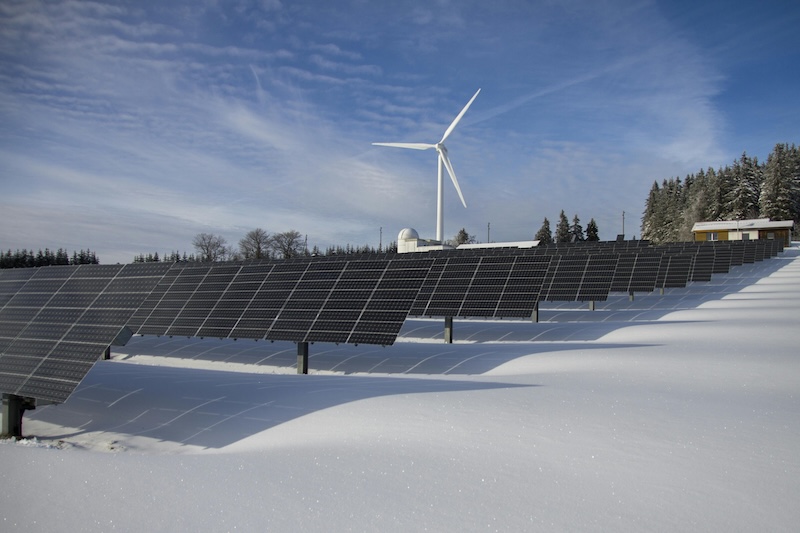
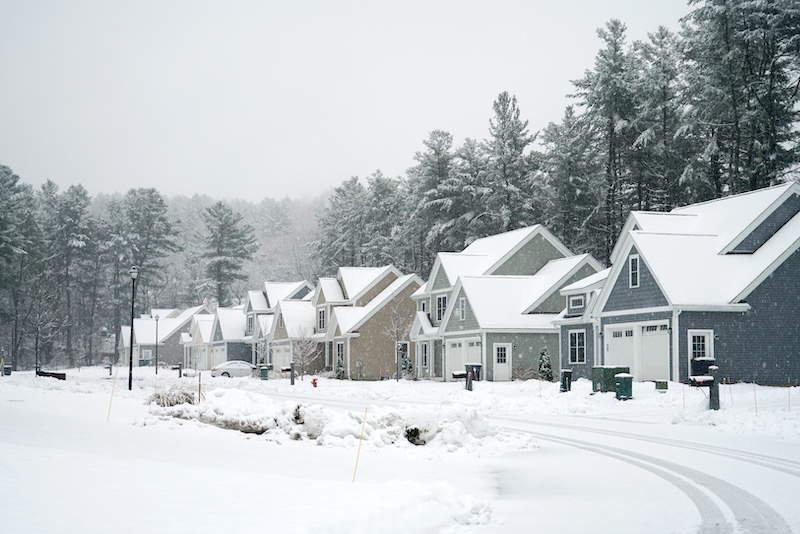
Building codes and minimum building standards such as ASCE 7, Eurocode, and the National Building Code of Canada, are used to calculate the maximum forces a building may encounter. These forces result from wind, snow and seismic activity. For wind up....
The National Oceanic and Atmospheric Administration (NOAA) estimates that in 2024 alone, the United States experienced 27 weather- and climate-related billion-dollar disaster events, with losses totaling $182.7 billion. Severe convective storms — a....
As the world transitions to clean energy, one of the biggest challenges facing the solar industry isn’t technology or financing — It’s labor. The demand for skilled workers to install and maintain solar infrastructure far exceeds supply, threat....
At the first RE+ Microgrids event in New....
Ensuring the reliability and efficiency ....
Natural disasters including hurricanes, severe storms, winter storms, wildfires and heat waves are becoming more frequent and severe, causing widespread power outages across the United States. Between 2000 and 2023, 80 percent of U.S. power outages w....
The geospatial sector has long worked behind the scenes, enabling technological advancements. However, with the rise of artificial intelligence (AI) and digital twins, it is now playing a vital role in the modernization of energy grids. These innovat....
Businesses and communities have long relied on centralized power grids, but as energy demand increases and reliability becomes less certain, many are looking for alternatives. More companies are adopting microgrids and virtual power plants (VPPs), cr....
How can one know the climate impact of a purchase or investment? Clean energy production is about climate mitigation, but how can one know the climate impact of a purchase or investment? Many investors and buyers want to understand how t....
There is no question that weather events place enormous stress on the country’s power grids. Nowhere is this more clearly on display than in the renewable energy market, including the turbulent conditions of the offshore wind industry. As....
Hydrogen peroxide (H2O2) is well known as a household disinfectant, but in its concentrated forms, it has a powerful second life as a clean and efficient propellant used in space applications. When decomposed, H2O2 breaks down into oxygen and wa....